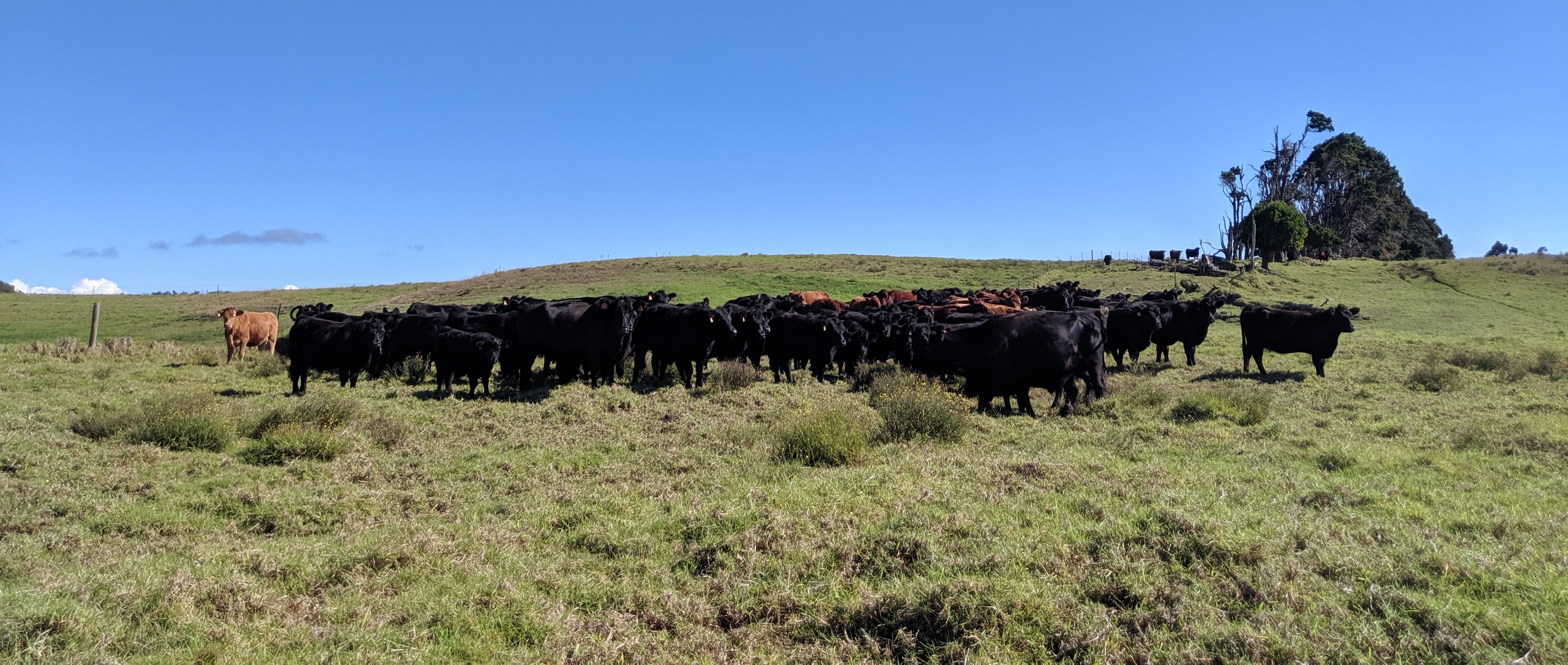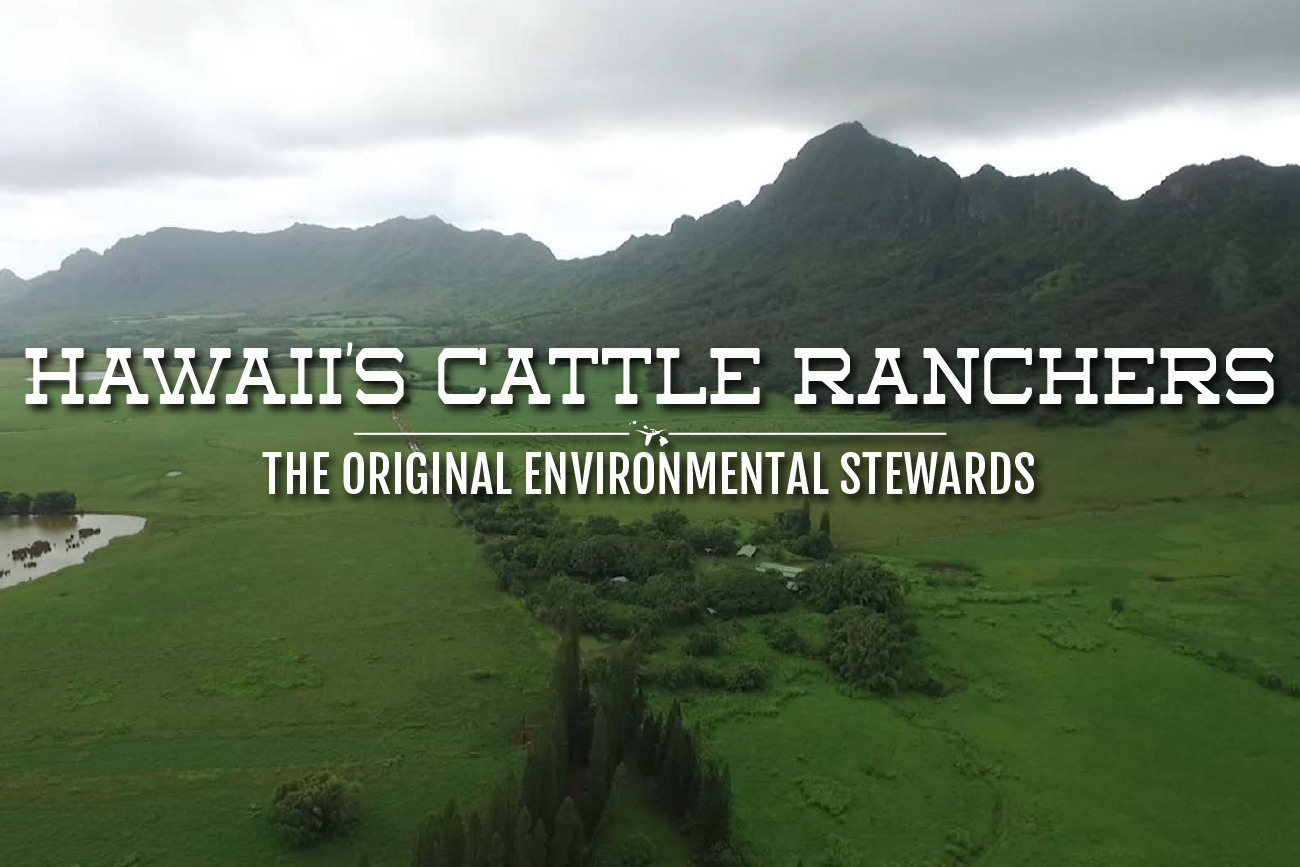From mauka to makai, Hawaii is filled with amazing sights. What is sometimes overlooked is the long, rich tradition of raising cattle in Hawaii. In fact, Hawaii's ranches produce a significant number of high-quality cattle. And, beef production is an important economic contributor in the state. Likewise, the men and women who raise cattle and produce beef today play an important role in protecting Hawaii’s natural resources where cattle have been raised for centuries. Those men and women are also ensuring the rich history of the industry is preserved so that it may be passed on to future generations. Hawaii’s cowboys - known as paniolos - are at the center of this effort to preserve the past and to pass along the lessons learned from a lifetime on the land.
Our Island Industry
The Production Cycle
WHERE OUR BEEF COMES FROM
Cattle's Longstanding History in Hawai'i
- Cattle first arrived in Hawai'i in 1793, when Captain George Vancouver presented King Kamehameha with six cows and a bull.
- King Kamehameha created a 400 acre pasture surrounded by a rock wall and placed a kapu on killing the cattle so that they could grow in numbers.
- By the mid 1800's, approximately 25,000 wild cattle roamed the landscape.
- King Kamehameha III lifted the kapu during his reign and in the following years, ranches were established and Spanish vaqueros were brought in to help teach Hawaiians how to manage these cattle.
- Over time, the ranches provided pipikaula (salt beef) for sailors and hides for New England tanneries, then production shifted to producing local beef for their communities, and finally adopting a grain finishing program for local beef production.
Today's Industry & Challenges
- Approximately 35 years ago, 90% of the beef raised in Hawaii was consumed locally and prior to 1992, cattle in Hawaii were fed locally in one of several feed yards on the islands
- In 1992, rising operating costs and better economic returns on the Mainland for Hawaii cattle, led Hawaii producers to ship most Hawaii calves to the Mainland to finish and process.
- This loss of supply forced the shutdown of the final feeding operation and Hawaii’s cattle producers had to find an alternate way to market their cattle.
- Currently, ranchers provide calves for finishing on the mainland and produce cattle for local consumption.
- Ranchers are constantly improving their management techniques, herd genetics and natural resource stewardship.
Glossary
The following words and phrases are non-English terms. The language family of each word or phrase is indicated by a letter or letters in parentheses:
(H) Hawaiian
(HCE) Hawaiian Creole English
(J) Japanese
A
`ae (H) yes
`ai (H) food, eat
akamai (H) smart, clever, expert
alaka`i (H) to lead, guide; leader
ali`i (H) chief
`a `ole (H) no
au (H) time, once upon a time
`au (H) to swim
`au`au (H) to bathe
B
bento (J) Box lunch
borinque (HCE) Puerto Rican
brah (HCE) brother, man
bumbye (HCE) eventually
D
da kine (HCE) non-specific reference term
H
haole (H) white person
hapa (H) half
hele (H) to go, come, walk, move
hele mai (H) to come (towards the speaker)
hiki (H) can, able
holoholo (H) to take a stroll, to take a ride, to go out for pleasure
ho`olaule`a (H) celebration
ho`olohe (H) hear
ho`omakaukau (H) get ready
hui (H) halloo
huli (H) to turn, to turn over
I
i (H) direct and indirect object—to, at, in, on, by, etc.
`ike (H) recognize, understand
K
ka`awale (H) to separate
kai (H) ocean
kalua (H) to bake in an underground oven
kani (H) sound, noise
kapu (H) taboo
kaula `ili (H) lariat, skin-rope
kauo (H) to tow, drag
keiki (H) child
kepuka (H) trick
kino (H) person, self
kipuka (H) snare
ko (H) preposition—of
koa (H) the largest native forest tree
kokua (H) help
kolohe (H) naughty
kona (H) leeward side of an island, leeward wind
kuleana (H) right, concern, responsibility
L
laka (H) tame
lanai (H) porch
lauhala (H) pandanus leaf
limu (H) moss, algae, seaweed, any water plant
lio (H) horse
loko (H) inside, inner
lolo (H) crazy
lu`au (H) feast
M
maka (H) eye
makai (H) at the ocean
maka`i (H) guard
maka`u (H) fear, afraid
make (H) die, dead
malama (H) take care of
mamua (H) forward
mauka (H) at the mountains
O
ohana (H) family
okole (H) buttocks
o`o (H) digging stick
P
pakalolo (H) marijuana
pake (H) Chinese
pani (H) shut, close
panini (H) the prickly pear
paniolo (H) cowboy
pau (H) ended
pehea (H) how? what?
pehea `oe (H) how are you?
pili (H) to stick, to cling
pine (H) tame bullock tied to a wild cow or bull
pipi (H) cattle, beef
poi (H) Hawaiian staple, made from boiled taro root
puka (H) hole
T
tita (HCE) tough woman
tutu (HCE) grandmother, or grandmother-figure
U
`ulu (H) Breadfruit
ulumanu (H) flock of birds
W
wa (H) time
wala`au (H) to speak, to converse
wau (H) var. of au

